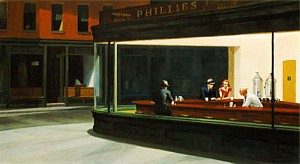In Child and Youth Care, a scene calls to us. We want to know it better, to understand what it means. We look at it like we look at a good painting trying to plumb its depths.
A few weeks ago I drove by the place where the residential treatment center I had worked at used to be. It had been torn down, but the hill on which it stood was still there. The boys and I did many things on that hill. We raked leaves, sat and sledded and rolled down it.
As I drove on, I remembered a time we had just come from the playground down the street and were walking up the hill. Below the hill on the other side were the railroad tracks where the boys tried to run away. None of them seemed to want to run away now though. We had had a good time at the playground and were hungry. Food was our minds and the smell the fall leaves was in the air. Small stones made our feet slip slightly as we walked up the asphalt driveway. We were moving together yet separately. The sun was low in the sky.
Later for some reason, Iím not sure why, I continued to draw this scene in my mind. In addition to what I described above, I knew other things about it. For example, it occurred in the 1960ís when I was a young man looking for an identity. The troubled boys were also searching for their identity. We were hoping for hamburgers. It felt good at that particular time to be together. Things were going relatively smoothly. For a moment, I felt on top of my game as a Child and Youth Care worker.
But I wanted to know more so I turned again to a book I wrote about last month that was written by poet Mark Strand about his interpretation of Edward Hopper paintings. For those who donít know Edward Hopper, he was a US artist who painted scenes from the 1940ís and 1950's, the most famous of which is a scene in a diner called Nighthawks. Strand said that Hopper paintings reminded him of how he experienced Canada as a boy from the back seat of his parents' cars. They were moving but the scenes he saw was still. He gazed at them but they did not return his gaze. As in looking at a Hopper painting, two forces compelled him, the urge to leave and the urge to stay.

I could relate immediately to Strand's comments. There was something about this scene that called to me but I also wanted to move on. We were walking, but the scene seemed like a still-life drawing. I looked at it but it did not look back at me. Our lives were moving forward, but we were captured at a moment in time. Our presence, the rhythm of our gait, the birds flying overhead, the time of day, and the calls I can still hear from the boys inside the building on their own search just before dinner, were all part of the scene.
I continue examining the scene. I try to imagine how I might have seen it from the backseat of my parents' car, my sense being that if I can see it through the eyes of my childhood, uninhibited by my professional questions and thoughts, it will be an even more valuable part of my evolving montage of Child and Youth Care.